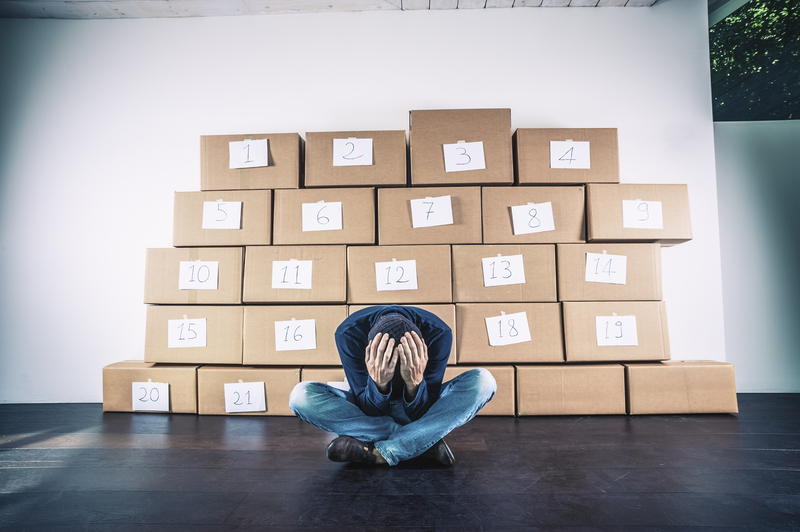Navigate Moving House Without the Overwhelm
Moving house can be an exciting new chapter, but it often comes with a whirlwind of responsibilities that can leave even the most organized individuals feeling overwhelmed. Whether you're upsizing, downsizing, or simply changing your scenery, the process carries much more than just packing boxes. From logistical hurdles to emotional goodbyes, it's easy to understand why stress can creep in. However, careful planning and smart strategies can help you manage the big move with ease. In this comprehensive guide, we'll explore proven tips and actionable steps to navigate moving house with minimal stress and maximum efficiency.
Why Moving House Feels Overwhelming
Before we dive into practical solutions, it helps to understand why moving house is so stressful. For many, relocation means:
- Packing up years of memories--and possessions
- Navigating logistics, paperwork, and deadlines
- Managing children, pets, and routines during transition
- Coordinating with moving companies or rental trucks
- Adjusting to a new environment and community
In addition, there's an emotional component: leaving behind a familiar home can spark nostalgia, anxiety, and uncertainty. It's entirely natural for these feelings to surface during a move. The good news? With proper planning, you can navigate your move without getting overwhelmed.

The Stress-Free Approach to Relocation
Let's break down the key steps to ensure a smooth, manageable move. Each stage is designed to simplify your approach and reduce stress.
1. Begin with a Detailed Moving Checklist
Your road to a seamless relocation begins with organization. Creating a detailed moving checklist is essential to ensure nothing slips through the cracks. Start by listing every task you need to accomplish, then break the list into weekly goals.
- Eight weeks before: Research moving companies, start decluttering, order packing supplies, notify schools/work.
- Six weeks before: Begin non-essential packing, label your boxes, plan for utilities at the new home.
- Four weeks before: Confirm movers, address changes, service your car, organize important documents.
- Two weeks before: Start packing essentials, schedule final cleaning, double-check plans with your moving company.
- Moving week: Pack day-of items, defrost the fridge, collect keys for the new property, perform final walkthrough.
Tip: Download free printable moving checklists online for added convenience and customization.
2. Declutter for a Fresh Start
Moving is the perfect time to simplify your belongings. Decluttering not only lightens your load but also saves you money and time during packing. Here's how to streamline effectively:
- Sort items by room and create piles: Keep, Donate, Sell or Dispose.
- Consider using the "One-Year Rule": if you haven't used it in the past year, chances are you can let it go.
- Host a garage sale or sell unwanted items via online platforms to offset moving costs.
- Donate items in good condition to local charities.
Decluttering before moving house reduces stress significantly and ensures your new home starts clutter-free.
3. Gather Quality Packing Supplies
To pack efficiently and protect your valuables, invest in quality moving supplies. Required materials often include:
- Sturdy moving boxes of various sizes
- Bubble wrap, packing paper or reusable packing cloths
- Heavy-duty packing tape and tape dispensers
- Marker pens for labeling boxes clearly
- Furniture blankets or stretch film for large items
- Zip-lock bags or small containers for screws and hardware
Bonus Tip: Color-code boxes with tape or stickers by room to streamline unpacking.
4. Develop a Room-By-Room Packing Plan
A step-by-step packing strategy will help you navigate moving house without becoming overwhelmed. Here's one way to approach packing:
- Start with infrequently used rooms: Attics, basements, or spare bedrooms can be boxed up early.
- Pack non-essentials first: Books, seasonal decor, and rarely used kitchenware can go ahead of time.
- Label every box: Include both the contents and destination room to make unpacking easier.
- Reserve essentials for last: Pack a 'first night' box with toiletries, bedding, meds, chargers, and a few kitchen items.
- Protect fragile items: Use plenty of cushioning and mark boxes "FRAGILE".
5. Hire Professional Movers vs. DIY
Choosing how to transition your possessions is a major decision. Weigh the pros and cons of professional movers versus a DIY move:
- Professional movers: Save time and physical labor, offer insurance and expertise, but come at a higher cost.
- DIY move: More budget-friendly and flexible, but demands substantial effort, coordination, and may carry risk of injury or lost items.
Get quotes from multiple moving companies, read reviews, and verify credentials. For DIY moves, reserve vehicles early and gather friends or family willing to help.
Staying Organized Amid the Chaos
1. Set Up a Moving Folder
Designate a folder--physical or digital--for all moving-related documents:
- Contracts with movers or rental companies
- Inventory of items
- Receipts and important contact numbers
- Change-of-address confirmations
- School or medical records, if applicable
This central hub makes it easy to access vital information at a moment's notice.
2. Schedule Utilities and Services
Arrange for utility disconnections at your old house and timely activation at your new address. Utilities and services to consider include:
- Electricity, gas, and water
- Internet and cable
- Waste collection
- Home security and smart home services
- Mail forwarding with the postal service
Don't forget to update your details with banks, healthcare providers, and subscription services as well.
3. Involve the Whole Family
Moving house without the overwhelm is easier when everyone pitches in. Assign age-appropriate tasks to children, such as packing their toys or labeling their boxes with stickers. Involving the whole family not only speeds up the process, but also helps everyone adjust to the change.
4. Look After Your Wellbeing
Prioritize self-care amid the hustle of moving. Here are some ways to avoid burnout:
- Take regular breaks and stay hydrated
- Get adequate sleep before moving day
- Keep snacks and drinks on hand during packing
- Delegate tasks and don't be afraid to ask for help
- Celebrate small victories along the way
Remember, your emotional health is just as important as physically completing the move.
Moving Day: Staying Calm and in Control
1. Stick to Your Plan
On moving day, use your checklist and timeline as a guide. Double-check that all boxes are loaded, doors and windows are locked, and nothing essential has been forgotten. Take photos for your records, especially if you're renting.
2. Keep Essentials Handy
Pack an "essentials bag" for each family member. These should include:
- Change of clothes
- Toiletries and basic medications
- Chargers and important electronics
- Favorite snacks and a water bottle
- Important documents and keys
Having these items accessible will help you settle in the first night without rummaging through dozens of boxes.
3. Conduct a Final Walkthrough
Before you lock up for the last time, go through every room, cupboard, and closet to make sure you haven't missed anything. Check the garage, backyard, and attic as well. Leave behind any materials the new residents would find helpful (spare keys, appliance manuals, local guides).
Settling Into Your New Home
1. Unpacking Strategically
The urge to unpack everything immediately is understandable, but take your time. Begin with essential rooms--bedrooms, bathrooms, and the kitchen.
- Unpack the "first night" box and set up beds.
- Assemble and plug in appliances as needed.
- Gradually organize each room over several days.
- Break down boxes for recycling as you go.
Make your new place feel like home with small, comforting touches as you settle in.
2. Connect With Your New Community
One often overlooked aspect when you navigate moving house is adjusting to unfamiliar surroundings. Try these tips:
- Introduce yourself to neighbors and ask for local recommendations.
- Locate nearby grocers, medical centers, and community resources.
- Explore nearby parks, cafes, and recreational spots.
- If you have children, visit local schools and parks early on to ease the transition.
Building a sense of belonging can make your relocation experience much more positive.
3. Address Post-Move Admin Tasks
A few after-move necessities include:
- Registering your new address with authorities (if required)
- Checking that all utilities work as expected
- Reviewing your insurance policies to ensure coverage at your new address
- Filing away moving receipts for possible tax deductions (if eligible)

Frequently Asked Questions: Navigate Your Move Smoothly
How can I move house with children and keep them happy?
Involve children in the process from the start. Keep routines consistent where possible, make packing a game, and let kids pack their own "special box" to keep close by--this fosters excitement and reassurance.
Is it better to move during the week or on weekends?
Both have merits. Weekday moves may be cheaper and less crowded with moving companies, but may disrupt work or school routines. Weekends are more convenient for families, but can be busier for movers and traffic.
How do I safely pack fragile items?
Use small boxes for fragiles, wrap individually in bubble wrap, and keep heavy items at the bottom. Fill empty spaces to prevent shifting. Always label boxes as "Fragile" and specify the room for unloading.
Should I tip movers?
While not required, tipping your movers is a thoughtful gesture, especially for exceptional service. Standard tips range from $20-$50 per mover, depending on move complexity and satisfaction.
Final Thoughts: Move Smarter, Not Harder
Navigating a house move without the overwhelm is absolutely achievable with forward thinking, good organization, and a positive mindset. The journey may seem daunting, but by breaking down tasks, asking for help, and taking care of yourself and your family, you'll be able to focus on the joy of starting anew. Remember, every move is a fresh opportunity--embrace it, and you'll find yourself settled and content in no time.
Ready to make your move? Use these strategies to ensure your next transition is as seamless and stress-free as possible. Happy Moving!



